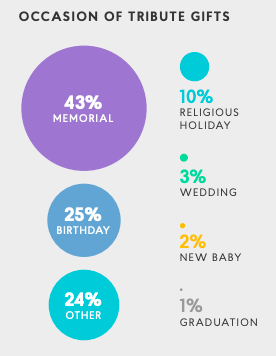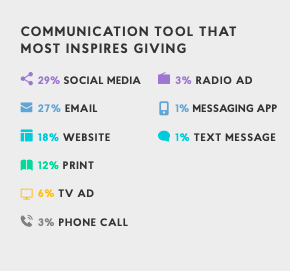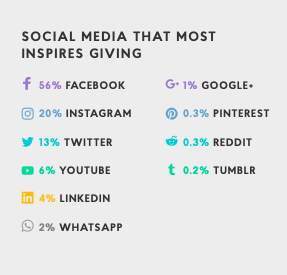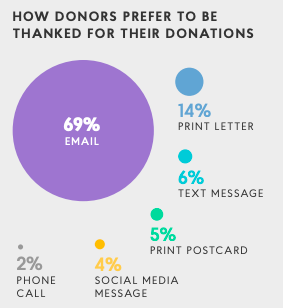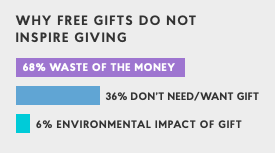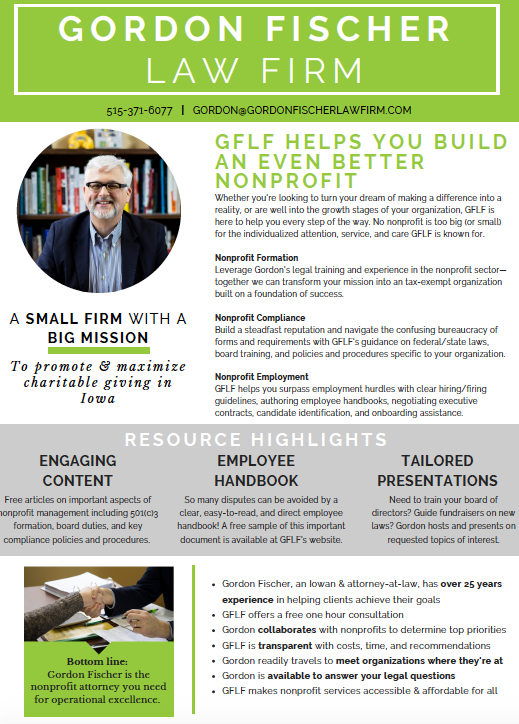Acting ethically as a charitable organization is paramount to success. Even the illusion of unethical operations can cause lasting damage to your organization. (Case in point: Look at what happened to the Donald J. Trump Foundation and, by association, Eric Trump’s foundation.)
Smart nonprofit boards adopt, in writing, crucial values such as honesty, integrity, transparency, confidentiality, and equity. Sure a policy or two cannot “create” a certain culture or ethical operations by itself. But, well-drafted policies CAN actively promote and reinforce ethics in conduct and decision-making to all involved within the organization.
Major Benefits of Promoting Ethics
The realities of modern communication and social media mean that just about anyone can be a publishing “journalist.” This also means that organizations, especially nonprofits, can be subject to intense scrutiny. Because of tax-exempt status and dependence on charitable donations, nonprofits tend to be held to a higher standard than their for-profit counterparts.
An ethical issue—even the illusion of one—can split boards, cause stakeholders to pull back, snap donors’ wallets shut, and even result in expensive litigation. Fortunately, there are policies and procedures that can prevent your hardworking organization from having to deal with such controversy, by deterring unethical situations from every occurring. These policies include:
Code of Ethics
Every nonprofit should adopt a set of ethical principles to guide its decisions and conduct of its board members, officers, employees, independent contractors, volunteers, and other stakeholders. These ethical principles are typically called a “code of ethics,” “statement of values,” or “code of conduct.” Regardless of the title, the purpose of formally adopting a set of ethical principles is to provide guidelines for making ethical choices and to ensure that there is accountability for those choices. When board members adopt a code of ethics, they are actively expressing their deep commitment to ethical behavior. Making such a commitment can help earn and maintain the public’s trust.
Confidentiality
Respecting the privacy of donors, prospective donors, employees, and volunteers, as well the nonprofit itself, must be a paramount value. For example, financial information of a donor must be treated as highly confidential, and not be disclosed or discussed with anyone without the express, explicit permission.
Care should also be taken to ensure that unauthorized individuals do not overhear any discussion of confidential information and that documents containing confidential information are not left in the open or inadvertently shared. In short, it is critical to adopt a confidentiality policy regarding identity, financial institution accounts, credit card numbers, and all such information about finances.
Ethical Fundraising
Federal and state law significantly impact nonprofit fundraising. Beyond merely meeting what the law requires, nonprofits can demonstrate a first-class commitment to legal compliance by adopting an ethical fundraising policy. This would codify, for example, that all communications to donors and potential donors are honest and accurate. Another example: requirements to provide attributions for marketing imagery and never include information with minors that could be considered personal identifying information.
Financial Management
Nonprofit board members, both individually and collectively, owe a fiduciary duty to ensure the organization’s assets are used in accordance with donors’ intent and the charitable mission. To ensure prudent financial management, nonprofits should adopt financial management policies.
Financial management policies clarify the roles, authority, and responsibilities for essential activities and decisions. Examples of nonprofit financial policies commonly used include a description of how cash is handled; whether and how travel expenses will be reimbursed; and the board’s role in reviewing executive compensation.
Financial Transparency
Nonprofits also should adopt a financial transparency policy. An example of a fundamental financial transparency practice is to make information accessible to interested individuals regarding the nonprofit’s budget, sources of revenue, and information about board composition, programs, outcomes/impact, and staffing.
Basic “Good Governance” Practices
There are several basic practices every nonprofit should engage in to maintain “good governance”:
- Maintain corporate minutes
- Annual review of “conflicts of interest”
- Annual review of compensation
- Self-assessment process
- Diversity
- Board orientation/training
Updating Ethics Policies
If you already have some (or all) of the above-listed policies in place, seriously consider the last time they were updated. How has the organization changed since they were written? Have new legislative policies impacted these policies at all? It may be time for a new set of ethics policies for your organization.
Additional Policies Need
Note nonprofits also need additional policies for optimal compliance. In addition to the ten major policies and procedures that support the best possible IRS Form 990 (such as public disclosure, gift acceptance, and whistleblower) nonprofits should have documents in place covering the topics of employment; grantors and grantees; endowment management; and legal training for directors.
Questions? Please don’t hesitate to contact me via email (gordon@gordonfischerlawfirm.com) or on my cell phone (515-371-6077). I’d be happy to discuss your nonprofit’s specific needs and policies promoting ethics, with you at your convenience.







